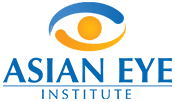Refractive Errors
Refractive errors occur when images become blurry when the eyeball is unusually long or short, or the cornea or lens is not evenly or smoothly shaped. The types of refractive errors are:
- Nearsightednesss (Myopia) – an eye condition where a person can see nearby objects clearly but has difficulty seeing objects at a distance. The eyeball is slightly longer than normal so the light rays fall in front of the retina.
- Farsightedness (Hyperopia) – an eye condition where a person can see distant objects well but has difficulty seeing objects up close. The eyeball is shorter than average so the light rays focus behind the retina.
- Astigmatism – an eye condition where a person has distorted and blurred vision at all distances. It is caused by an imperfectly shaped cornea that prevents light from focusing properly on the retina.
- Presbyopia – an age-related condition where the eye loses its ability to focus on nearby objects, making it difficult to read small text. It becomes noticeable in early to mid-40s and worsens as the persons grow older.
Many people suffer from a combination of either nearsightedness and astigmatism or farsightedness and astigmatism. These errors can develop in anyone and can be hereditary. They are usually accompanied by blurry vision, squinting and eye strain.
Patients suffering from refractive errors are usually recommended to wear eyeglasses, contact lenses or reading glasses. However, with the advancement of technology, a laser procedure can now be done to reduce or eliminate their use of eyewear.
- Photorefractive Keratectomy (PRK) – ideal for patients with thin corneas. It changes the curvature of the cornea through two steps – scraping off the surface layer of your cornea using an alcohol-
based solution and applying laser energy to your cornea. A 10-minute-per-eye procedure, it makes use of a temporary bandage to protect the cornea while it’s healing. - Trans-epithelial PRK (tPRK) – is a no-touch, no-alcohol, no-scrape all-laser treatment. As the latest innovation in PRK, it only takes 3 minutes to perform and offers faster visual recovery and less inflammation. It’s also ideal for patients with thin corneas.
- LASIK – is the most popular method of correcting refractive errors and eliminating the need for eyewear. It has two (2) crucial steps – creating a corneal flap and applying laser energy to reshape
the cornea. The flap is then returned to its original position, covering the lasered area. Asian Eye is the only facility in the Philippines with the latest generation of Victus Femtosecond Laser and the Teneo 2 Excimer Laser, both from German brand Bausch and Lomb. At present, Asian Eye offers two (2) types of treatment:- Proscan Treatment – can treat eye grade and astigmatism
- Zyoptix Wavefront-Guided Treatment – can treat eye grade, astigmatism and aberrations, giving you the best possible treatment for your eyes. Aberrations form an irregular pattern
that causes additional distortion on what you see.
- Supracor – a revolutionary technology from Technolas of Germany that can reshape the cornea for both distance and near vision. It is suitable for patients in their 40s, 50s and 60s, who are experiencing presbyopia (the difficulty in reading small text) and want to lessen their dependence on reading glasses. Patients who’ve had cataract surgery can also undergo this procedure.
- Implantable Contact Lenses (ICLs) – also known as phakic intraocular lens implant. This is surgically placed between the iris (the colored part of the eye) and natural lens, without having to
remove the natural lens of the eye. These are ideal for patients with high degree of nearsightedness, high astigmatism, thin or irregularly shaped cornea or chronic dry eye. The ICL offers the best quality of vision in both day and night-time conditions.
A refractive screening is highly recommended to evaluate whether the patient is a good candidate for LASIK. Aside from the eye grade, multiple tests are conducted to ensure the safety and accuracy of the treatment. Depending on the results, the surgeon recommends the proper treatment for the patient.







